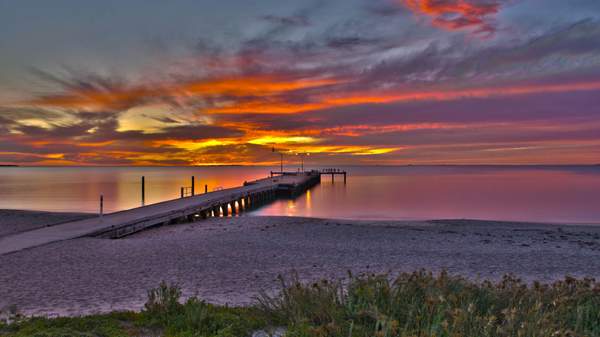Overview
Since Australia started easing out of COVID-19 lockdown, the country's internal border restrictions have earned plenty of attention. With tactics to stop the spread of the coronavirus implemented at a state-by-state level — and case numbers in each state varying — different parts of the country have navigated the situation in different ways when it comes to letting non-residents visit.
In Western Australia, that meant a hard border and strict quarantine requirements for most of the year. For folks who didn't normally reside in WA, you could only visit the state if you were classified as an exempt traveller, applied for a G2G Pass and, if approved, then self-isolated for 14 days — or went into a mandatory state quarantine facility for the same period. That changed for most of the country in mid-November, however, and now it'll change for New South Wales and Victorian residents from 12.01am on Tuesday, December 8 as well.
As announced today, Tuesday, December 1 by WA Premier Mark McGowan, the state will relax its border restrictions with the two eastern states as part of the system that's been dubbed a 'controlled interstate border'. WA currently allows travellers from very low-risk states and territories to enter under eased conditions — people from places that haven't had any community transmission of COVID-19 for 28 days, who can now head to WA without isolating — which'll be updated to include NSW and Victoria from next week.
That means that, along with folks from Queensland, Tasmania, the Northern Territory and the Australian Capital Territory, residents from NSW and Victoria will be able to venture west without quarantining. You do still have to complete a G2G Pass declaration, and you'll undergo a temperature test and health screening upon arrival — and you're advised to be prepared to take a COVID-19 test if necessary as well.
That's a hefty shift from the current situation, where NSW and Victoria are considered low-risk states — which, for travellers, presently means still self-quarantining for 14 days, then taking a COVID-19 test on the 11th day. WA has always said it would likely only consider downgrading NSW and Victoria to very low-risk once they'd chalked up 28 days without community transmission, which the latter has hit and the former is due to reach on Friday, December 4.
Announcing the change, Premier McGowan said "we can take this next step, safely and cautiously, thanks to the recent success of our friends over east getting the spread of the virus under control". He continued: "Victoria's success is something all Australians should be proud of. I want to thank everyone for their understanding and co-operation — it's because of their commitment we are now able to take this next step."
Folks from South Australia are currently classified as hailing from a medium-risk jurisdiction, however. That means they currently need to apply for an exemption to enter WA, and then quarantine — but that'll be reviewed on Friday, December 11.
To find out more about the status of COVID-19 in Western Australia, and the state's corresponding restrictions, visit its online COVID-19 hub.
